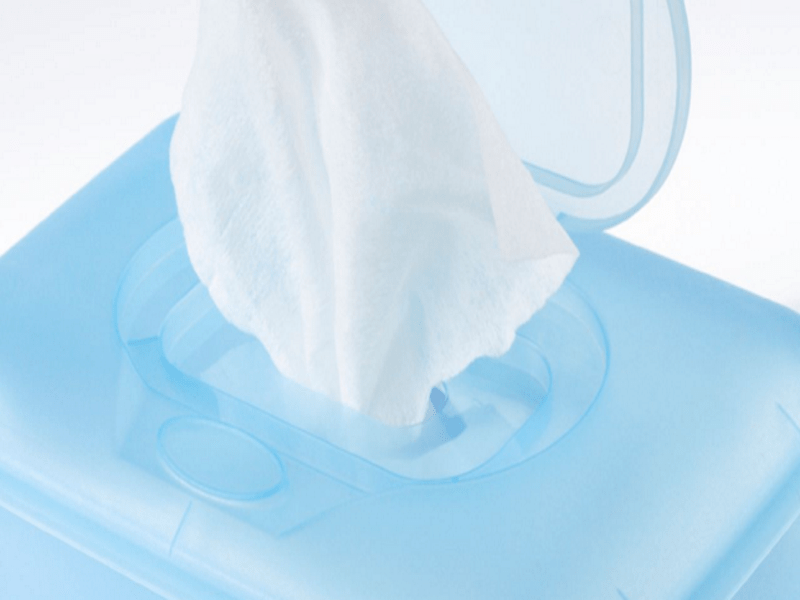Market Report
The Future of Sustainable Nonwovens to 2022

The drive for sustainable products and processes in all markets has been growing for several decades, although at a widely varied pace.
Although this report is about sustainable nonwovens, today there are no completely sustainable nonwovens. Sustainability is a quality to strive for and progress toward, but rarely wholly attainable.
Sustainability is defined, in general, by the The United Nations Commission on the Environment and Development, which says that ‘sustainable development is development that meets the needs of the present without compromising the ability of future generations to meet their own needs.’ For nonwovens, EDANA defines sustainable development, or sustainability, as the reconciliation of economic growth with environmental protection and social responsibility, globally.
In Smithers new report on this topic, The Future of Sustainable Nonwovens to 2022, a nonwoven product or process is defined as one that is developed and produced sustainably as defined above. For every product, process and raw material a percentage is developed using sustainable concepts, and a percentage is developed using non-sustainable methods. For every nonwoven product, process, raw material and end use, the percentage of sustainable development is assessed and used to define the ‘sustainable nonwoven’ segment of that product, process or application.
The global consumption of all nonwovens in 2017 is 10.1 million tonnes, equivalent to $42.3 billion and 269.8 billion square metres (m2). Growth in 2012-17 is quantified by annual rates of 6.5% ($), 7.4% (square metres), and 6.5% (tonnes). Growth in 2017-22 is projected at annual rates of 6.3% ($), 7.2% (square metres), and 6.2% (tonnes).
The sustainable nonwovens market is smaller, but growing faster, especially in the more mature markets of Western Europe and North America. The global consumption of sustainable nonwovens in 2017 is 3.7 million tonnes or 94.8 billion square metres (m2), valued at $14.1 billion. Annual growth rates for 2012–17 were 10.5% (tonnes), 11.6% (m2) and 11.2% ($). The annual growth rates for 2017–22 are projected at 6.4% (tonnes), 7.0% (m2) and 7.1% ($).
Wipes are the most developed sustainable end use, while hygiene is the least developed sustainable end use. Medical is not as well represented in sustainable disposable end uses as it is in the overall disposable nonwovens market.
Drivers
The drive for sustainable products and processes in all markets has been growing for the last two decades. For some markets, it has been the fear of global warming driving change, for others, the uncertainty of future petroleum supply and cost, and for others the overflowing landfills. Whatever the driving force, many in the global community desire more sustainable products.
The nonwovens industry is no different and, in fact, may be even more driven to develop sustainable products due to its high level of dependency on disposable products, many of which are among the most visible products in the world, such as disposable baby diapers and disposable wipes. Consumers, retailers and governments have all viewed these products with questions, desires and sometimes demands.
It is imperative that the nonwovens industry continues to progress toward sustainability in products and processes; first, because it is good for the global community and second, because it is (in the long term) good for business.
The key drivers for the progress of sustainable nonwovens, according to Smithers latest research, are:
For sustainable nonwovens, drylaid, with spunlace and needlepunch favoured for sustainable nonwovens, leads all processes.
Spunlaid is the second largest process used to process sustainable nonwovens; not because existing products are sustainable, but because this process is currently so large and so important in the nonwovens industry. The cost effectiveness and performance advantages make this technology very difficult to displace; it is more likely that solutions such as recycling and biopolymer raw materials will be found to preserve its usefulness in sustainable nonwovens.
Airlaid is third in usage for sustainable nonwovens. This low energy, low waste process relies heavily on the most sustainable raw material (wood pulp) and is, on average, the most sustainable process. Unfortunately, not all products can be made with airlaid; lightweight (less than 45 g/m2) hydrophobic products are very difficult and expensive. Additionally, global airlaid capacity is limited and expansion slow.
Wetlaid has the smallest representation among nonwovens processes used for sustainable nonwovens. This is more a reflection of wetlaids’ small share of the overall nonwovens market than its lack of sustainability. With its ability and tendency to use large quantities of wood pulp as a raw material, and with hydrogen bonding providing at least some strength, the process is relatively sustainable. However, chemical, energy and water use are issues.
There are dramatic differences between all nonwovens raw material use and sustainable nonwovens raw material use. For all nonwovens, polypropylene fibre and polymer account for 54.1% of the raw materials consumed in 2017. For sustainable nonwovens, polypropylene polymer and fibre account for only 29.3% (recycled and recyclable polypropylene, blends with biopolymers and bio-sourced polypropylene). For all nonwovens, cellulose-based raw materials (wood pulp, rayon, lyocell, cotton and others) account for only 17.0% of raw materials consumed in 2017; for sustainable nonwovens that percentage increases to almost 32.6%.
Europe leads the world in sustainable nonwovens, but growth will be slower in the future than it has been to 2017. North America is the second largest market, and will also slow – but not to the extent that Europe will. Meanwhile Asia, which is third globally in tonnes of sustainable nonwovens consumed, is expected to see impressive growth through to 2022.
These trends are analysed, qualified and quantified in full in the Smithers report The Future of Sustainable Nonwovens to 2022. This exclusive market and business strategy publication is available for purchase now.